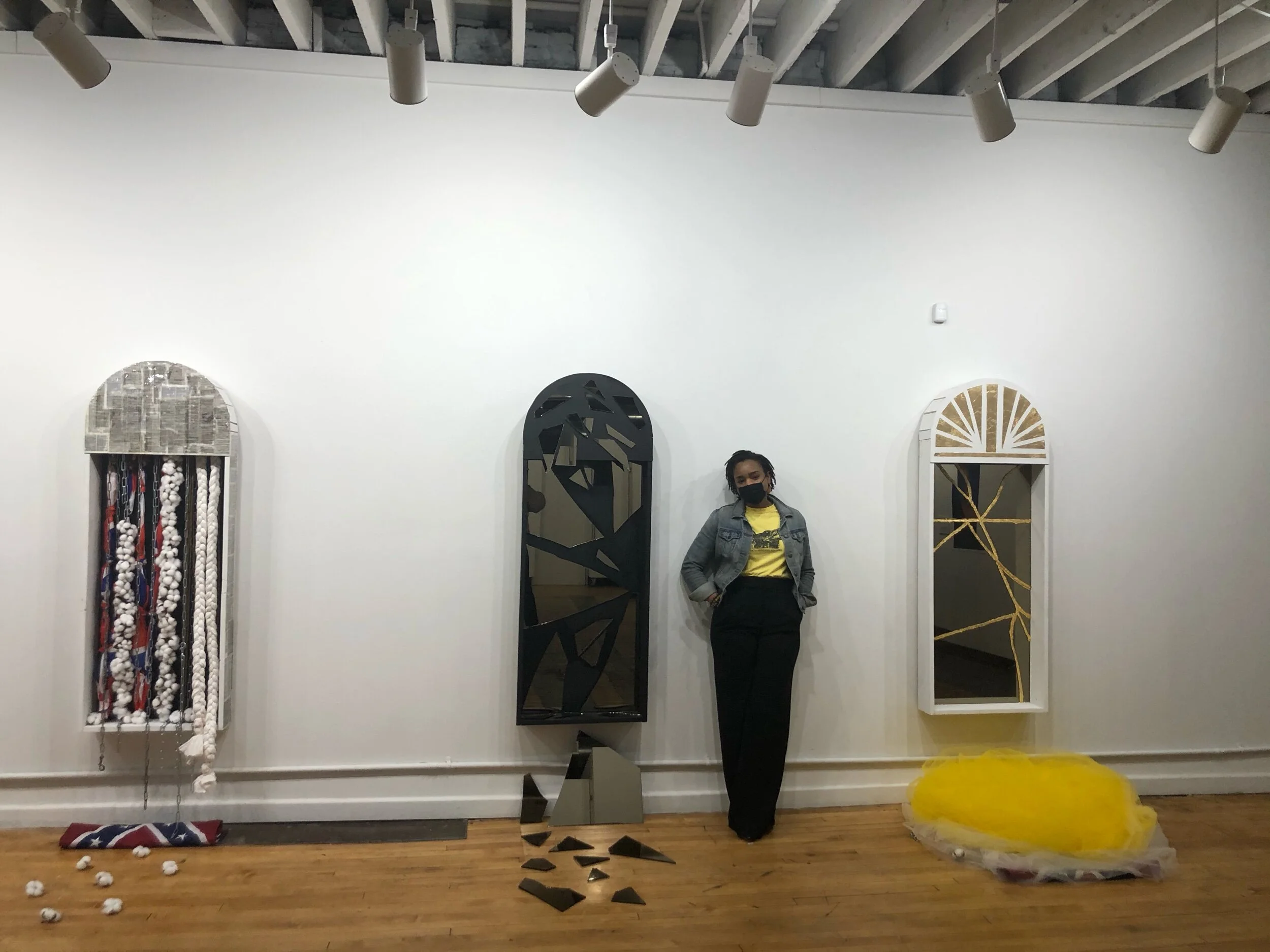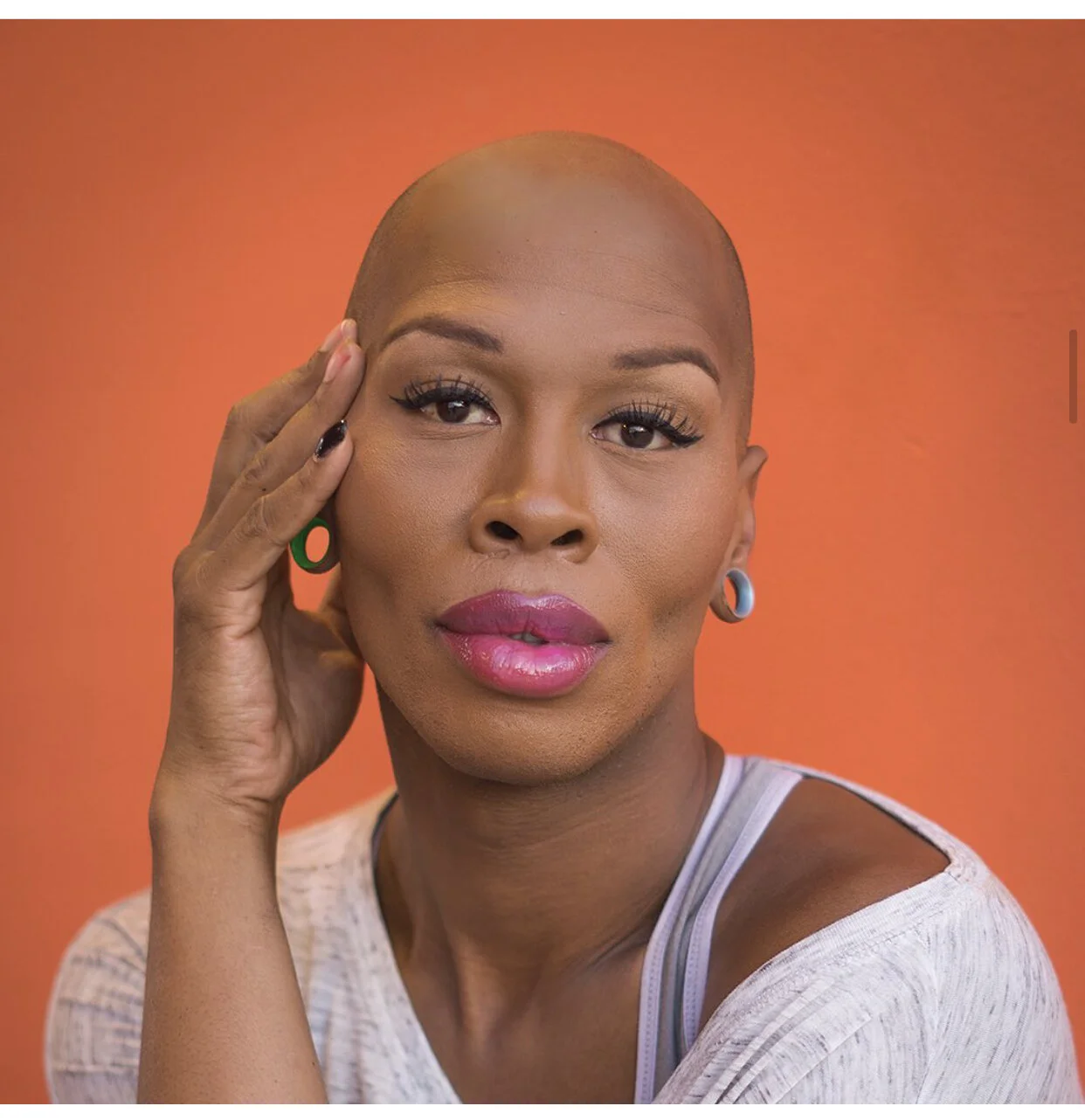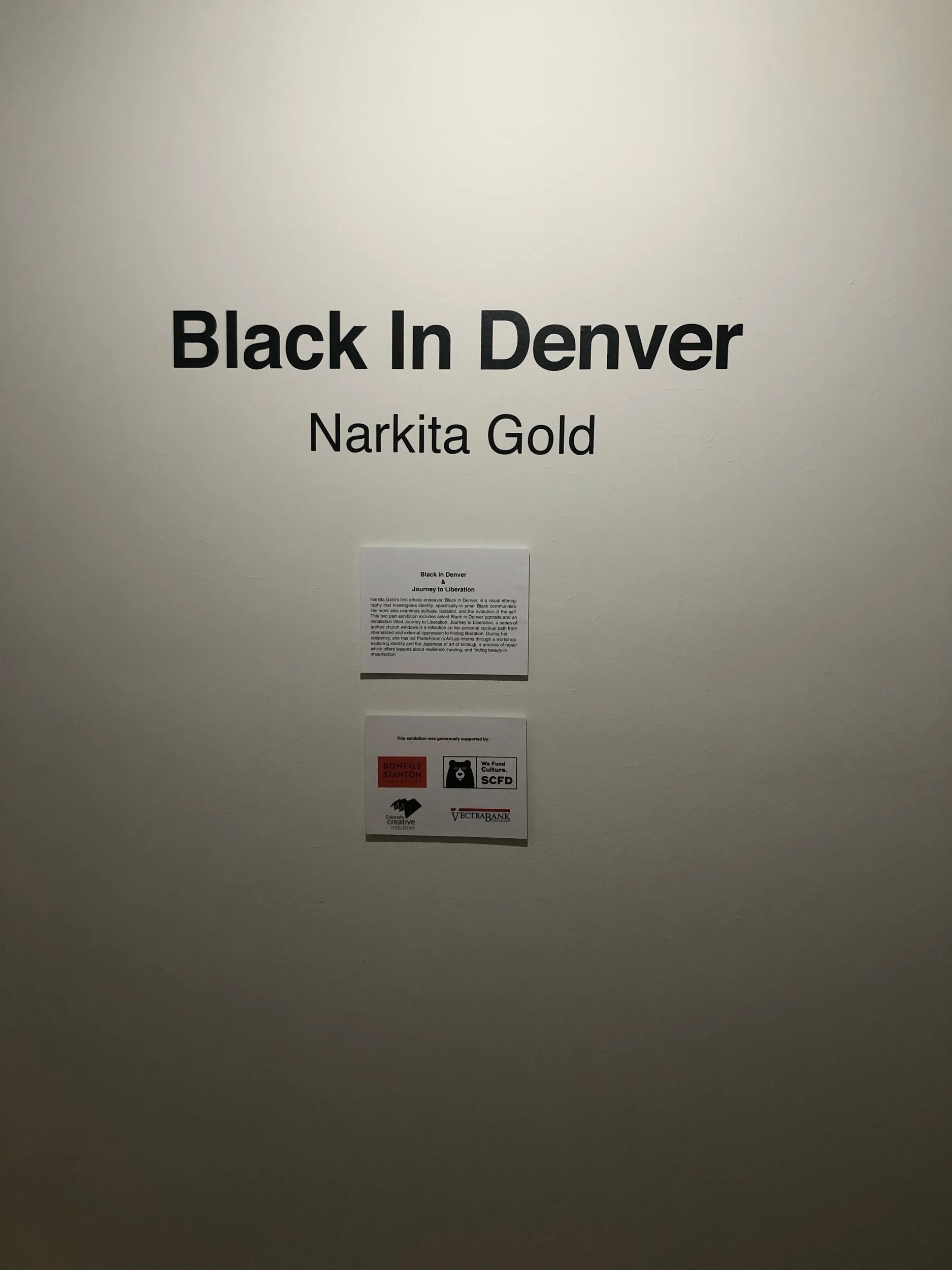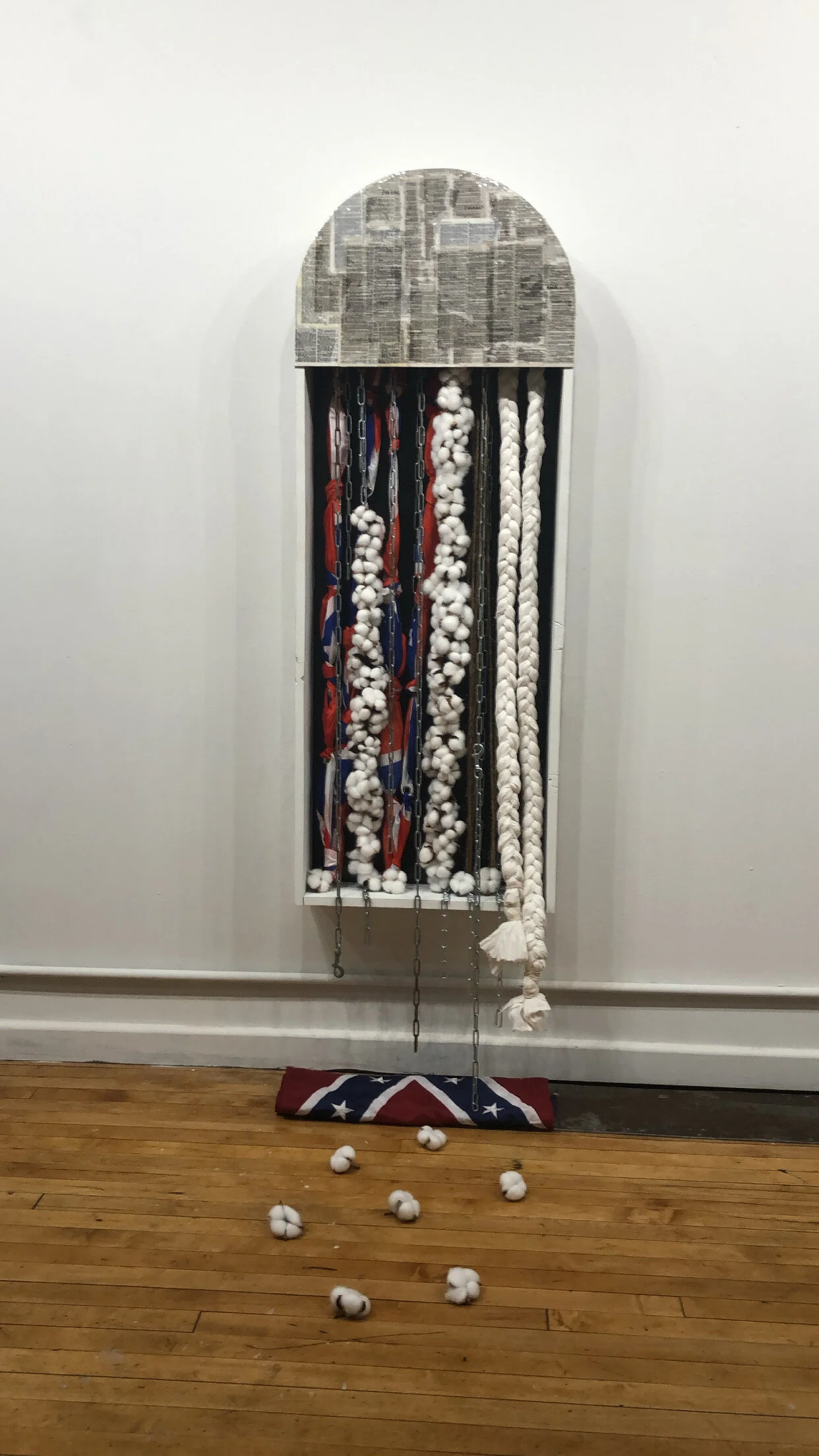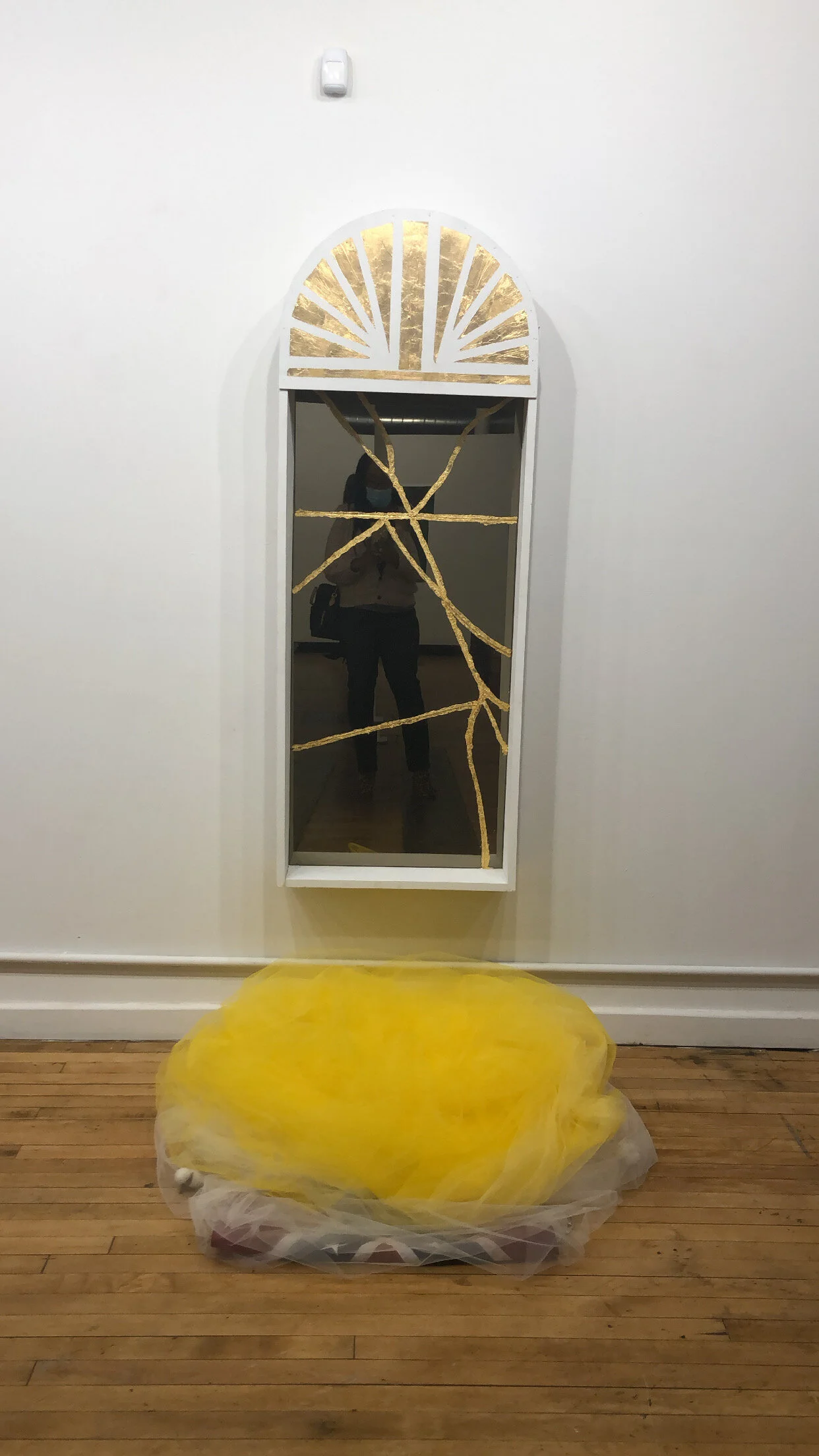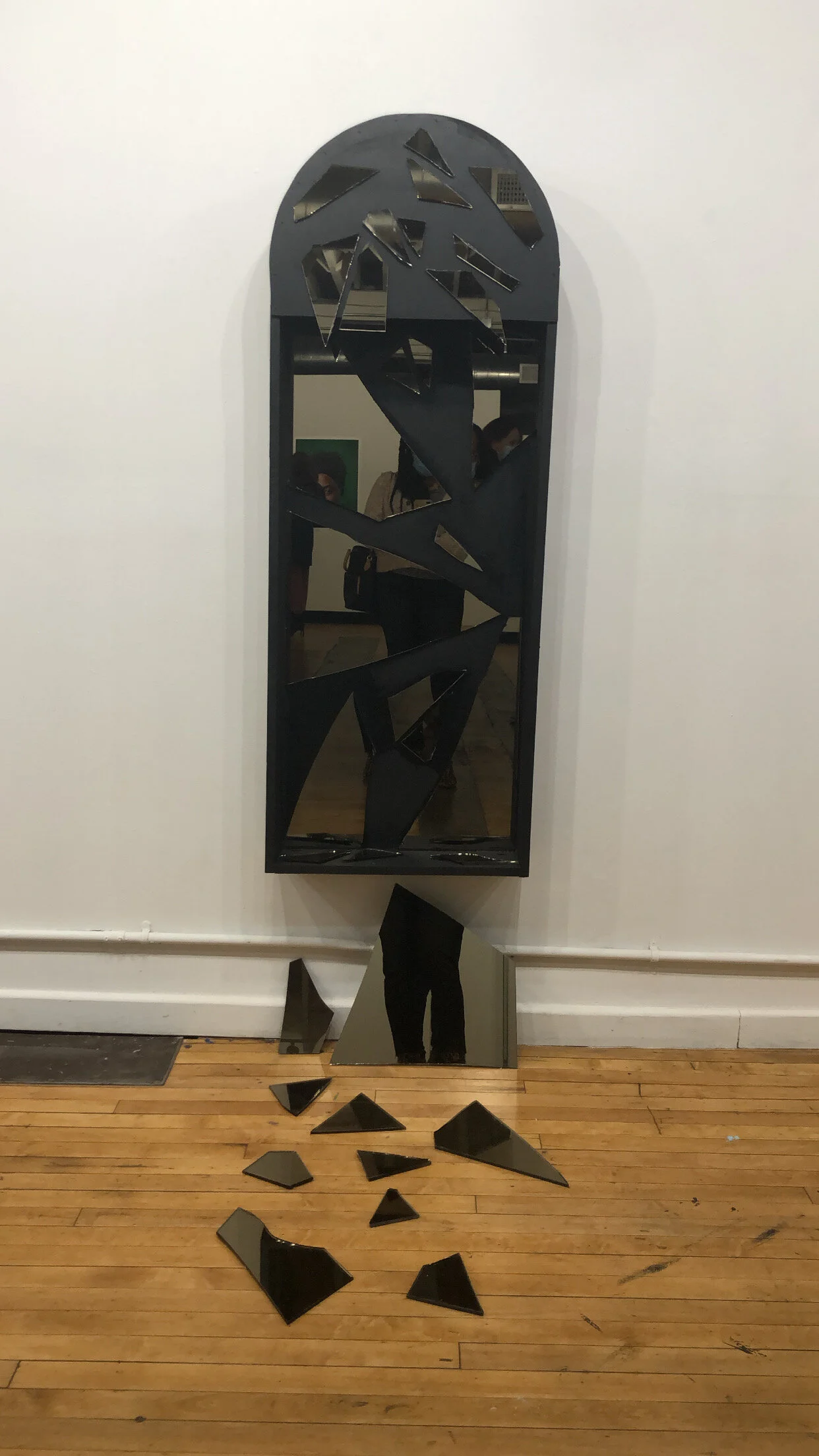Welcome to travel ➕explore ➕play with Sallee Jay, where I am your host. 👋🏾💓‼️
Back out on the scene taking in great art, eating good food and enjoying the fruits of life. Follow along with me as I celebrate one of my favorite local artists on her newest Art Installation.
Narkita Gold
Journey to Liberation
“Journey to Liberation,” a series of three arched church windows are a reflection of Narkita’s personal spiritual path from internalized and external oppression to finding liberation through art. Always a gracious and humble spirit, the artist shared time with me and explained her message and insights on her newest work inspired by the Japanese art form and philosophy called Kintsugi and what’s next!
Sallee Jay: Thank you for having me this evening, this installation is absolutely beautiful. Tell me a little bit about the inspiration behind the pieces.
Narkita: There are three archways. The first encompasses a contemporary and historical narrative. I’m communicating the heavy invisible cloak of oppression of the South and the history of Christianity, specifically during slavery when slave masters would use scriptures to control enslaved people. It also looks at internalized oppression and mental enslavement. I’ve taken materials associated with all the above and reshaped them to tell a story.
The second window is a representation of the brokenness within the black individual due to harmful structures and systems of oppression.
Third window is all about looking within and taking that brokenness and those broken pieces and putting them back together to self-heal and liberate oneself. I use the color yellow to illustrate personal power, confidence, peace, and happiness. I also have objects in the third piece from the first piece, which is centered around oppression; illustrating how it is always present.
Window Archway 1:
Oppression
Sallee Jay: You’ve incorporated scriptures in your first window archway, share with us the selection process and your reference material.
Narkita Gold: I did a lot of research about which scriptures were taken out of context and used against enslaved people. For instance Ephesians 6:5 states,
“Slaves, obey your earthly masters with deep respect and fear. Serve them sincerely as you would serve Christ.” NLT
** Disclaimer: I went on to read further for context,**
Ephesians 6:6-9 NLT
Try to please them at all time, not just when they are watching you. As slaves of Christ, do the will of God with all your heart. Work with enthusiasm, as though you are working for the Lord rather than for people. Remember that the Lord will reward each one of us for the good we do, whether we are slaves or free. Masters, treat your slaves in the same way. Don’t threaten them; remember, you both have the same master in heaven, and he has no favorites.
Narkita Gold: Ephesians 6:5 is just one of the scriptures used against enslaved people. I also discovered bible verses that condone slavery. I even learned that there was a slave bible which omitted parts of the Bible which reflects on freedom. There is also a scripture condoning beating slaves, it’s all in there and I wanted to raise questions for people. I've also included Leviticus 18:22 which the church uses today to condemn queer people.
Window Archway 2:
Brokenness
Sallee Jay: The second window archway is about the brokenness of the black community. Obviously it’s black to represent the community but there’s also a darkness within the peace can you speak to that?
Narkita Gold: I love your take on the second piece. I didn't think about that. This is really about looking within myself and seeing the psychological injury from oppression and suppression. Acknowledging the fact that the system has harmful effects and in a very deep way. It represents epigenetics and transgenerational trauma. This archway also feeds into the third archway. Taking the pieces, the brokenness, the trauma and putting ourselves back together, and learning we can heal!
Sallee Jay: So as an added layer this breaking apart and putting back together, the gold in the third archway is representation of the Japanese technique Kintsugi?
Narkita Gold: I was inspired by Kintsugi which is all about embracing the flaws and seeing the beauty in imperfection. The Japanese art form takes broken pottery and pieces it back together with gold lacquer. It is also about self-love and self-acceptance. It’s like yes I’ve been through this, there are these broken pieces but I’ve been able to put them back together and that makes me more valuable. The third window is also about tapping into that internal light that we all have within us. It’s about tapping into our power, our confidence, our authenticity and letting it shine despite the system we exist within.
WindowArchway 3:
Liberation
Sallee Jay: In addition to “Journey to Liberation,” we are also surrounded by a selected few pictures from your first love and my introduction to you, your baby “Black in Denver,” How do these two projects intersect and overlap with one another?
Narkita Gold: The photos that were selected for this show specifically are a reflection of this new work. Olivia for instance talked about the heavy, invisible weighted cloak of oppression in her interview. Tya talked about liberation and social justice. Euda talked about authenticity. Halim talked about liberation.
Lastly.. Narkita Gold can be Found on all social media platforms
IG/FB/Twitter @NarkitaGold - website: www.narkitagold.com
IG/FB/Twitter @BlackinDenver - website: www.blackindenver.com
And be on the lookout for the evolution of Narkita Gold and her artwork, she is everywhere!
Congratulations from me and all of the Jays, we are rooting for you and cannot wait for you to continue to share your love, art and your light with the world.
Be sure to check out “Journey to Liberation” featured at Platte Forum from March 11 through March 25 and “Black in Denver” featured at the Museum of Contemporary Art in Denver from February 26 through August 22, the Colorado Photographic Art Center from February 19 through April 17.



